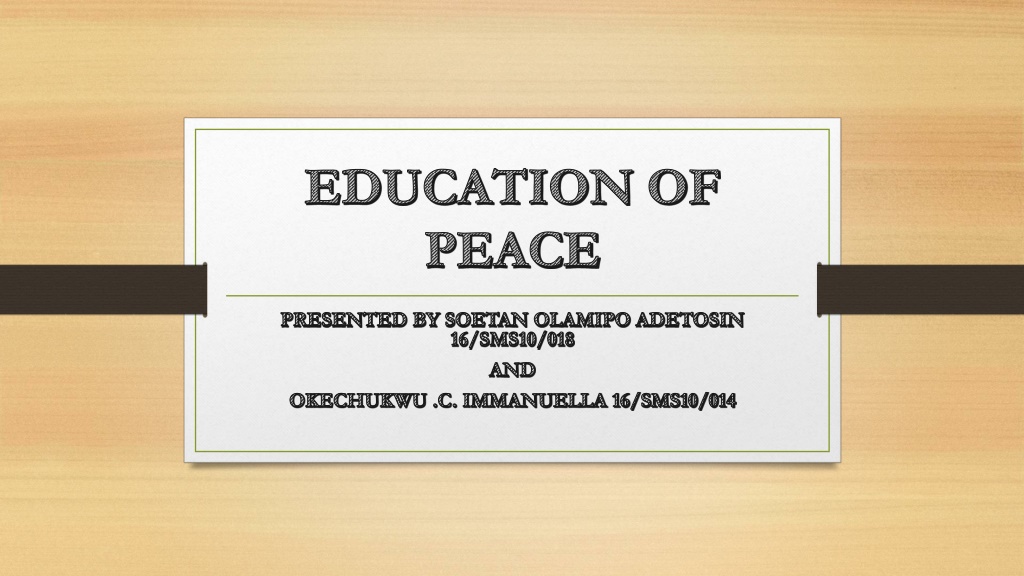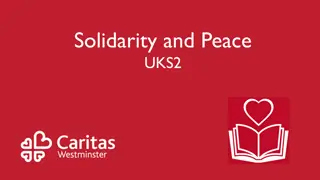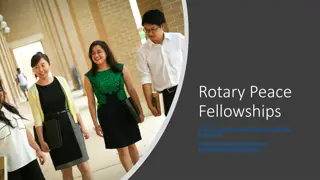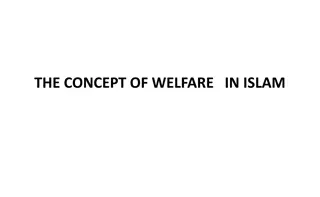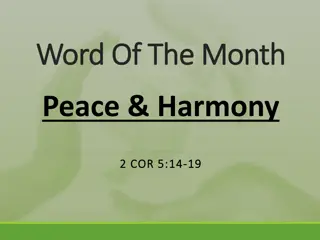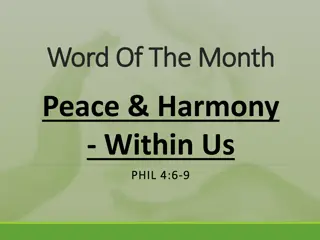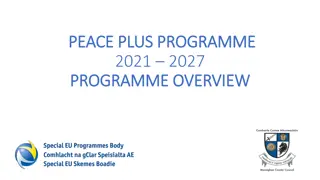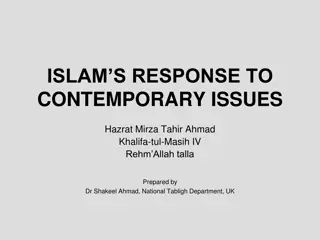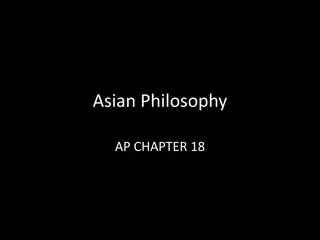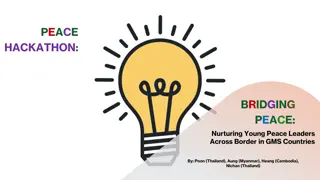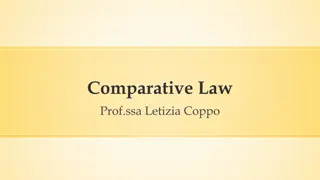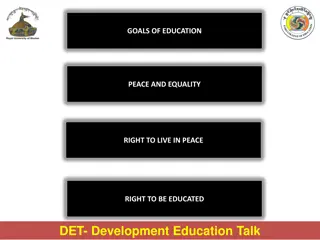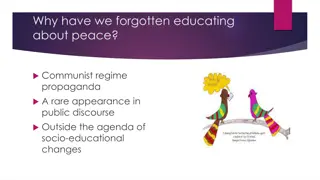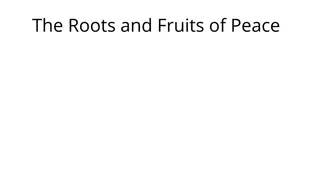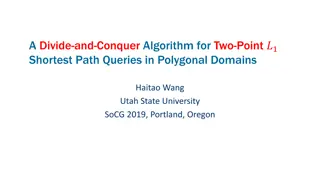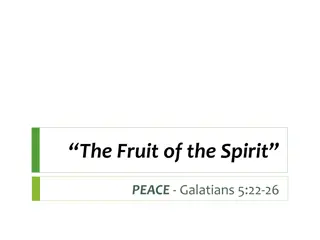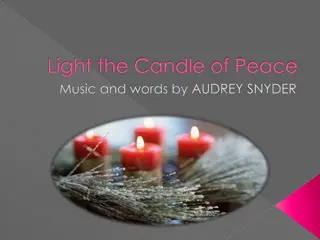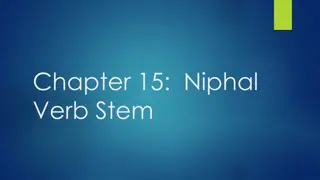Understanding Peace Education: A Path to Harmony and Social Change
Peace education is a vital process that involves acquiring values, knowledge, and skills to live harmoniously with oneself, others, and the environment. It encompasses conflict resolution training, democracy education, and human rights education. Through teaching encounters and critical analysis, individuals are empowered to promote peace, justice, and equality in society, fostering a commitment to peaceful coexistence and social transformation.
Download Presentation

Please find below an Image/Link to download the presentation.
The content on the website is provided AS IS for your information and personal use only. It may not be sold, licensed, or shared on other websites without obtaining consent from the author. Download presentation by click this link. If you encounter any issues during the download, it is possible that the publisher has removed the file from their server.
E N D
Presentation Transcript
EDUCATION OF PEACE PRESENTED BY SOETAN OLAMIPO ADETOSIN 16/SMS10/018 AND OKECHUKWU .C. IMMANUELLA 16/SMS10/014
DEFINITION Peace education is the process of acquiring the values, the knowledge and developing the attitudes, skills, and behaviors to live in harmony with oneself, with others, and with the natural environment. Ian Harris and John Synott have described peace education as a series of "teaching encounters" that draw from people: - their desire for peace, - nonviolent alternatives for managing conflict, and - skills for critical analysis of structural arrangements that produce and legitimize injustice and inequality. James Page suggests peace education be thought of as "encouraging a commitment to peace as a settled disposition and enhancing the confidence of the individual as an individual agent of peace; as informing the student on the consequences of war and social injustice; as informing the student on the value of peaceful and just social structures and working to uphold or develop such social structures; as encouraging the student to love the world and to imagine a peaceful future; and as caring for the student and encouraging the student to care for others" .
Peace education as... 1.Conflict Resolution Training Peace education programs centered on conflict resolution typically focus on the social- behavioural symptoms of conflict, training individuals to resolve inter-personal disputes through techniques of negotiation and (peer) mediation. In general, approaches of this type aim to alter beliefs, attitudes, and behaviours from negative to positive attitudes toward conflict as a basis for preventing violence . There are variousss styles or approaches in conflict resolution training (ADR, Verbal Aikido, NVC) that can give the practitioner the means to accept the conflictual situation and orient it towards a peaceful resolution.
2.Democracy Education Activities are structured to have students assume the role of the citizen that chooses, makes decisions, takes positions, argues positions and respects the opinions of others . Based on the assumption that democracy decreases the likelihood of violence and war, it is assumed that these are the same skills necessary for creating a culture of peace. Activities are structured to have students assume the role of the citizen that chooses, makes decisions, takes positions, argues positions and respects the opinions of others . Based on the assumption that democracy decreases the likelihood of violence and war, it is assumed that these are the same skills necessary for creating a culture of peace.
3.Human Rights Education Peace education programs centered on raising awareness of human rights typically focus at the level of policies that humanity ought to adopt in order to move closer to a peaceful global community. The aim is to engender a commitment among participants to a vision of structural peace in which all individual members of the human race can exercise their personal freedoms and be legally protected from violence, oppression and indignity. Approaches of this type familiarize participants with the international covenas and declarations of the United Nations system; train students to recognize violations of the Universal Declaration of Human Rights; and promote tolerance, solidarity, autonomy and self-affirmation at the individual and collective levels. Human rights education faces continual elaboration, a significant theory-practice gap and frequent challenge as to its validity.
4. Worldview Transformation H.B. Danesh proposes an "Integrative Theory of Peace" in which peace is understood as a psychosocial, political, moral and spiritual reality. Peace education, he says, must focus on the healthy development and maturation of human consciousness through assisting people to examine and transform their worldviews. Worldviews are defined as the subconscious lens (acquired through cultural, family, historical, religious and societal influences) through which people perceive four key issues: 1. The nature of reality, 2. human nature, 3. the purpose of existence 4. the principles governing appropriate human relationships. He subdivides conflict-based worldviews into two main categories which he correlates to phases of human development: the Survival-Based Worldview and the Identity-Based Worldview. It is through the acquisition of a more integrative, Unity-Based Worldview that human capacity to mitigate conflict, create unity in the context of diversity, and establish sustainable cultures of peace, is increased.
CRITICISM Toh Swee-Hin (1997) observes that each of the various streams of peace education inevitably have their own dynamics and autonomy in terms of theory and practice . Salomon (2002) has described how the challenges, goals, and methods of peace education differ substantially between areas characterized by intractable conflict, interethnic tension, or relative tranquility . According to Clarke-Habibi (2005), "A general or integrated theory of peace is needed: one that can holistically account for the intrapersonal, inter-personal, inter-group and international dynamics of peace, as well as its main principles and pre-requisites. An essential component of this integrated theory must also be the recognition that a culture of peace can only result from an authentic process of transformation, both individual and collective.
Education has been touted as one of the most powerful tools we can implement in our global efforts to promote world peace. Here s a look at some ways education promotes world peace; 1 Education Boosts Confidence & Hope Confucius said it as far back as 500 B.C.: Education breeds confidence. Confidence breeds hope. Hope breeds peace. Confidence has been defined as the belief that you can succeed at something and a sense of self assuredness. Knowledge is a key confidence builder; it allows one to feel a sense of accomplishment, to be more fearless, and to grow in unexpected ways. This confidence and self assuredness in turn sparks motivation and optimism or hope as Confucius says to work towards peace. .
2 Education Promotes Independent Thinking Education encourages independent thinking, and it opens doors to new ideas. Independent thinkers tend to try to make sense of the world and draw their own conclusions instead of blindly following the beliefs of others. Independent thinkers may be less likely to join militant groups or be followers, and may instead be leaders towards positive change and action
3. EDUCATION INSPIRES PROBLEM SOLVING SKILLS Along with math skills that are learned in classrooms, students are often challenged to use logical thinking in order to analyze different pieces of literature, the significance of historical events, and scientific findings. Coupled with independent thinking, these critical thinking skills can lead to innovative solutions and alternatives to violence
4. EDUCATION BUILDS COMMUNICATION SKILLS In the classroom, students are often asked to speak or read in front of others, offer opinions, and break into small groups to work on projects together. This is how communication skills are honed, and communication is they key to solving conflict. Through quality education, students may be armed with the tools to work within their communities to solve problems, or to do so on a global scale.
5. EDUCATION INCREASES POLITICAL INVOLVEMENT Educated citizens are less likely to stand for government corruption and can spur more government accountability. For women, education can even the playing field, and they are more likely to participate in political discussions, town meetings, and decision making, therefore leading to a government that represents its citizens more equally. Because educated women are less likely to support terrorism, they can promote alternatives through politics.J
6. EDUCATION REDUCES SUPPORT OF TERRORISM AND MILLITANCY According to a University of Maryland School of Public Policy survey, uneducated women are more likely to support militancy and terrorism, and educated women are less likely than their educated male peers to support this way of life. And if a woman doesn t support it, perhaps she can talk her husband into not supporting it, and then her kids, other family members, and other members of her community.
7. EDUCATION BUILDS EMPATHY AND TOLERANCE The Human Rights conventions declare: Education must prepare a child for responsible life and effective participation in a free society in a spirit of understanding, peace, tolerance, equality of sexes and friendships among all peoples, ethnic, national and religious groups and persons of indigenous origin. Therefore with quality education, a child can learn the quality of empathy and understanding towards those who are different from them. And they may be more accepting of others and less likely to solve problems with violence.
8. CULTIVATES RESPECT EDUCATION In the classroom, students learn to respect their teachers and their peers. They are taught to let others speak and express opinions, not to interrupt, how to deal with stress, and how to conduct themselves within a group setting. Perhaps this learned respect for other humans can be practiced on a global scale, where there s a respect for each and every life, not just those who share the same religious beliefs and backgrounds.
